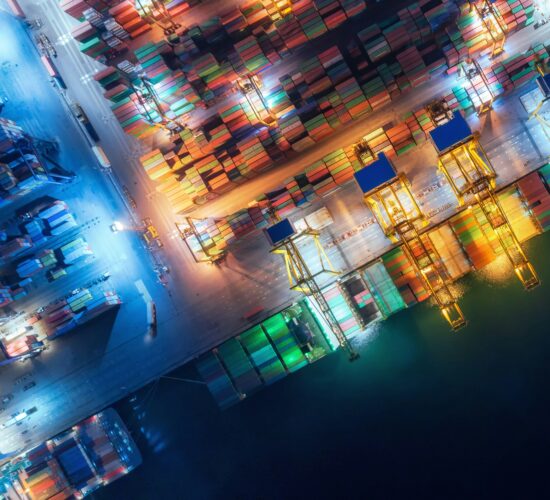Securing the Supply Chain: Why Cybersecurity Is the Cornerstone of Modern Logistics

The Expanding Digital Footprint of Logistics
Modern logistics operations have evolved far beyond the image of warehouses, shipping containers, and freight trucks. Today, they are complex, digitally interconnected ecosystems linking suppliers, manufacturers, transportation networks, customs systems, and end customers in real time. This transformation has brought immense efficiency gains, from GPS-enabled fleet tracking to automated inventory management. However, with every added digital touchpoint comes an increased risk of cyberattacks. Criminals now see logistics not just as a physical supply chain but as a rich target for digital disruption, theft, and sabotage.
The logistical web involves everything from enterprise resource planning (ERP) systems to cloud-based tracking dashboards. A single vulnerability—whether in a trucking company’s software, a customs clearance platform, or a port’s operational system—can cascade into widespread delays and losses. As global supply chains become more digitized, the stakes for cybersecurity in logistics have never been higher.
Types of Cyber Threats Facing Logistics Companies
The range of cyber threats confronting logistics operations is vast and constantly evolving. Ransomware attacks can paralyze critical shipping schedules, forcing companies to pay enormous sums to regain access to operational systems. Data breaches targeting customer or partner information can erode trust and lead to costly legal repercussions. Phishing campaigns can deceive employees into revealing login credentials, allowing attackers to gain entry into sensitive systems.
There are also risks of “cyber-physical” attacks, where digital intrusions directly affect physical operations. For instance, hacking into a port’s container management system could result in misplaced containers, shipments being delayed, or even mishandled dangerous goods. Moreover, supply chain partners often share sensitive data and rely on integrated systems, meaning a breach in one organization can quickly impact others.
The Real-World Impact of Cyber Incidents in Logistics
The consequences of inadequate cybersecurity in logistics go far beyond data loss. A cyberattack can grind entire supply networks to a halt. For example, if a shipping company’s routing software is compromised, vessels may be delayed for days, leading to missed delivery deadlines, spoiled goods, and financial penalties.
In some high-profile cases, attacks have even disrupted global trade. For instance, malware outbreaks targeting major shipping lines have caused delays across multiple continents, illustrating how a single digital breach can ripple through economies worldwide. Beyond the operational chaos, the reputational damage can be long-lasting—partners and customers may hesitate to work with a logistics provider known for security lapses.
Building a Cyber-Resilient Logistics Network
Creating a robust cybersecurity posture in logistics requires a multi-layered approach. The foundation lies in implementing advanced technical safeguards, such as intrusion detection systems, endpoint protection, encrypted communications, and network segmentation to contain breaches. Regular vulnerability assessments and penetration testing help identify weaknesses before they can be exploited.
Equally important is employee training. From dispatchers to customs brokers, frontline staff must be equipped to recognize phishing attempts, suspicious system behaviors, and social engineering tactics. In logistics, where human interaction with digital tools is constant, well-trained personnel serve as the first line of defense.
Cyber resilience also involves preparing for the worst-case scenario. This means having comprehensive incident response plans, disaster recovery protocols, and backup systems that can restore operations quickly. Logistics companies must be able to pivot to manual or alternative systems to keep goods moving even during an attack.
Securing Third-Party and Partner Systems
The logistics industry thrives on partnerships—freight forwarders, carriers, port operators, customs authorities, and technology providers work together to ensure goods reach their destinations. However, these connections create shared vulnerabilities. An attacker who breaches a small partner’s system can use it as a stepping stone into a larger network.
Logistics companies must extend cybersecurity standards across their partner ecosystem to mitigate these risks. This includes contractual requirements for data protection, regular security audits, and secure communication channels for sensitive information. Vendors and subcontractors should be evaluated not just for their operational capabilities but also for their cyber readiness.
Regulatory Compliance and Global Standards
Governments and industry bodies increasingly recognize cybersecurity’s importance in logistics and supply chains. Compliance with regulations such as the General Data Protection Regulation (GDPR) in Europe or the Cybersecurity Maturity Model Certification (CMMC) in the United States is no longer optional. Failure to comply can result in fines, operational restrictions, and damaged relationships with global partners.
Industry standards like ISO/IEC 27001 (information security management) and the NIST Cybersecurity Framework provide structured approaches for identifying, assessing, and mitigating cyber risks. Companies that adopt these frameworks improve their security posture and gain a competitive advantage by demonstrating trustworthiness to customers and partners.
The Future of Cybersecurity in Logistics
Looking ahead, integrating artificial intelligence (AI), Internet of Things (IoT), and blockchain into logistics will present new opportunities and challenges. AI can help detect and neutralize threats faster, while blockchain can improve data integrity in supply chain transactions. However, IoT devices—such as smart sensors on containers—expand the attack surface if not properly secured.
Cybersecurity in logistics will increasingly shift from reactive to proactive, with predictive analytics playing a central role. Organizations must anticipate threats before materializing and continuously adapting to new attack vectors. The winners in this space will be those who treat cybersecurity as an ongoing strategic priority rather than a one-time project.
In today’s hyper-connected logistics environment, cybersecurity is not just an IT concern but a fundamental operational necessity. The smooth flow of goods across the globe now depends on the protection of digital systems as much as on the movement of trucks, ships, and planes. Companies that invest in robust cybersecurity measures will safeguard their operations and strengthen their reputation, resilience, and competitive position in the global marketplace.
Additional Information
- Blogs
- Ari Raptis